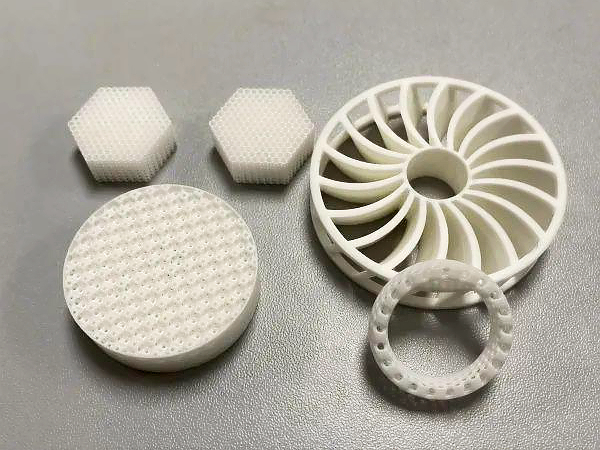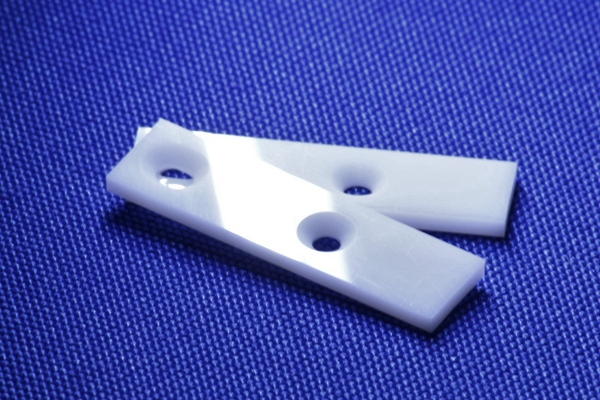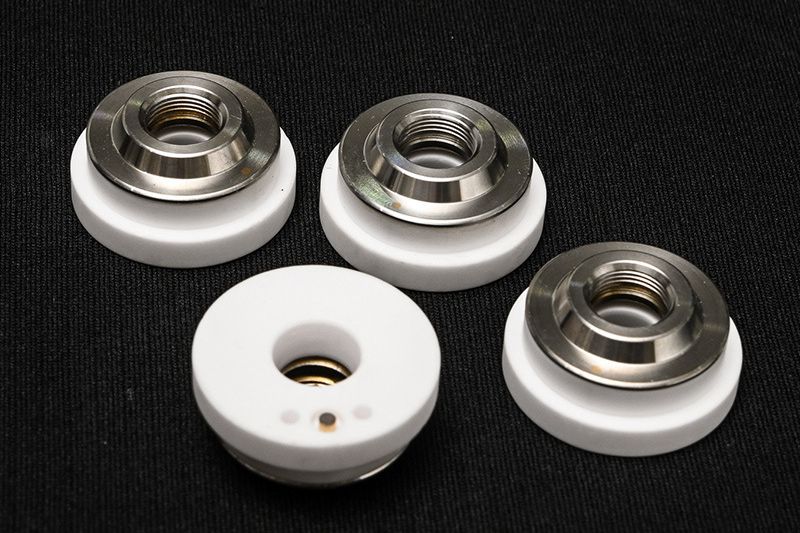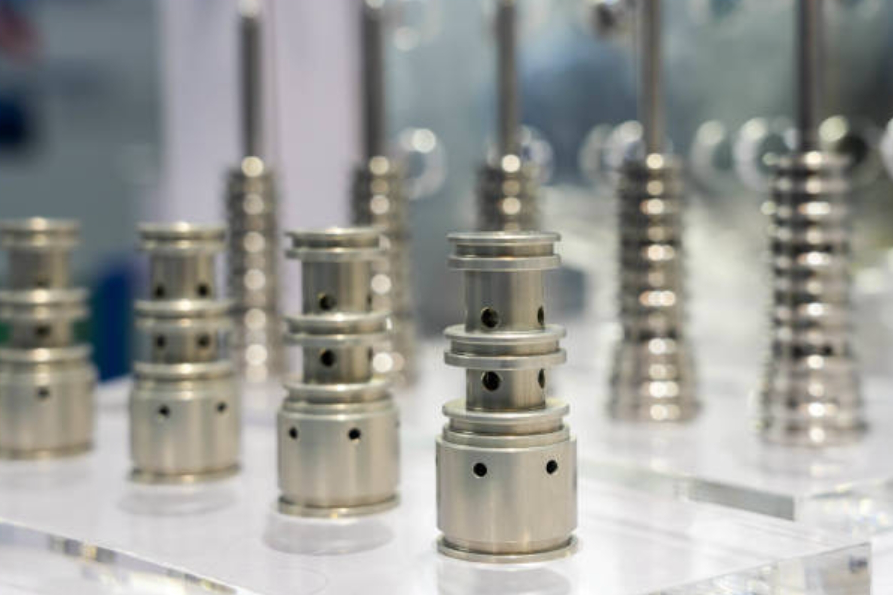Is Ceramic Injection Molding Suitable for Mass Production of Custom Ceramic Parts?
Is Ceramic Injection Molding Suitable for Mass Production of Custom Ceramic Parts?
Introduction
Ceramic injection molding (CIM) is a specialized manufacturing process that combines the precision of injection molding with the advantageous properties of ceramic materials. With growing industrial demands for high-performance components exhibiting exceptional strength, thermal stability, and corrosion resistance, ceramics have gained prominence. However, traditional manufacturing methods often struggle with mass production demands. This article explores the suitability of CIM for mass production, particularly for custom ceramic parts, evaluating its benefits, limitations, and applications, and future developments.
What is Ceramic Injection Molding (CIM)?
Ceramic injection molding is a process in which ceramic powder is mixed with a binder to form a feedstock, which is then injected into molds under pressure. Post-injection, the components undergo debinding to remove the binder, then sintering to achieve their final dense and robust form. Compared to conventional methods like pressing or machining, CIM allows the creation of complex geometries with high dimensional accuracy.
Common ceramic materials used in CIM include alumina (Al2O3), zirconia (ZrO2), silicon carbide (SiC), silicon nitride (Si3N4), and composite ceramics like alumina-zirconia.
Advantages of Ceramic Injection Molding in Mass Production
Precision and Complexity
CIM excels at producing intricate and complex shapes with tight tolerances, making it ideal for precision-demanding applications. The injection molding process ensures repeatability and consistency across large production runs, which is essential for industries requiring stringent quality controls.
Scalability and Efficiency
One of CIM’s primary advantages is its scalability for mass production. The process supports high-volume production with minimal human intervention, significantly reducing unit costs as production scales. Automation within CIM enhances efficiency, reduces cycle times, and lowers overall labor expenses compared to traditional ceramic manufacturing methods.
Material Versatility and Properties
Ceramics produced through CIM retain excellent material properties, including high strength, durability, and thermal stability. Manufacturers can customize ceramic formulations to precisely match application requirements, offering greater versatility and performance optimization.
Applications of CIM in Mass Production
Medical Industry
CIM is widely used to manufacture high-precision medical components such as dental implants, orthopedic implants, and surgical instruments. Its precision ensures critical medical standards and patient safety requirements are consistently met.
Electronics and Telecommunications
CIM produces intricate ceramic parts like connectors, insulators, and substrates in electronics. These components demand high precision, excellent thermal management, and superior dielectric properties, all readily achievable through CIM.
Automotive and Aerospace
CIM facilitates the production of engine components, sensors, and other high-wear parts required in automotive and aerospace applications. CIM-produced ceramic components' high strength and thermal resistance properties improve performance and reliability under demanding operating conditions.
Consumer Goods
Custom ceramic parts for luxury watches, decorative items, and precision tools are efficiently produced using CIM, showcasing both aesthetic appeal and functional excellence.
Limitations and Challenges of CIM for Mass Production
High Initial Investment
Despite its scalability benefits, CIM requires a significant upfront investment. Mold design and tooling costs can substantially influence initial project feasibility and ROI calculations, particularly for smaller batch sizes.
Material and Process Complexity
Ceramic materials and CIM processes are highly sensitive. Precise control over the composition and processing parameters is crucial, as slight variations can cause defects such as shrinkage, warping, or cracking during debinding and sintering. Ensuring process stability demands expertise and rigorous quality management.
Longer Lead Times
Developing and optimizing molds for CIM takes considerable time. The extended lead times associated with initial mold production and process validation can impact project schedules. Strategies such as rapid prototyping and iterative mold development can mitigate delays.
Key Factors to Consider When Evaluating CIM for Mass Production
When considering CIM for mass production, companies should evaluate the following:
Required production volume and complexity of the ceramic components.
Economic viability through cost-per-part analyses and break-even points.
Material-specific requirements and potential for customization.
Compliance with stringent quality and regulatory standards.
Careful consideration of these factors ensures informed decision-making and maximizes the benefits of CIM.
Case Studies: Successful CIM Mass Production Examples
Medical Devices
Ceramic dental implants manufactured via CIM showcase exceptional consistency, durability, and biocompatibility. Companies report significant cost reductions and superior quality control compared to traditional methods, boosting patient outcomes and market acceptance.
Electronics Industry
Manufacturers utilizing CIM for ceramic insulators and precision substrates note marked improvements in thermal management and dielectric properties. The consistent high-volume production achieved through CIM reduces costs and higher component reliability.
Automotive Components
Automotive manufacturers leveraging CIM report greater component reliability, especially in high-stress engine and braking applications. CIM-produced ceramics' high strength and thermal stability translate into improved performance, reduced maintenance costs, and extended component life.
Future Trends and Innovations in CIM
Advances in Material Science
Ongoing research in ceramic materials aims to enhance performance characteristics and reduce raw material costs. Innovations include improved powder technologies, novel ceramic composites, and optimized binder systems, significantly broadening CIM’s applicability and economic advantages.
Innovations in Mold Design and Rapid Tooling
Emerging rapid tooling technologies and additive manufacturing techniques enable quicker, more cost-effective mold creation. These advancements accelerate development cycles, reduce upfront costs, and enhance CIM’s attractiveness for diverse production scenarios.
Industry 4.0 Integration
Integrating Industry 4.0 technologies, including IoT, AI-driven process controls, and advanced robotics, promises substantial improvements in CIM process reliability, efficiency, and adaptability. These technologies facilitate real-time monitoring, predictive maintenance, and optimized process adjustments, positioning CIM as a frontrunner in smart manufacturing.
Conclusion
Ceramic injection molding is highly suitable for the mass production of custom ceramic parts, offering unparalleled precision, scalability, and versatility. While upfront investment and complex material handling present notable challenges, careful planning, and advanced technology adoption effectively address these concerns. Companies in the medical, electronics, automotive, aerospace, and consumer goods sectors have successfully leveraged CIM, underscoring its potential. As material science and Industry 4.0 innovations advance, CIM’s capabilities and cost-efficiency will continue to expand, further solidifying its place as an essential manufacturing technology for custom ceramic components.




